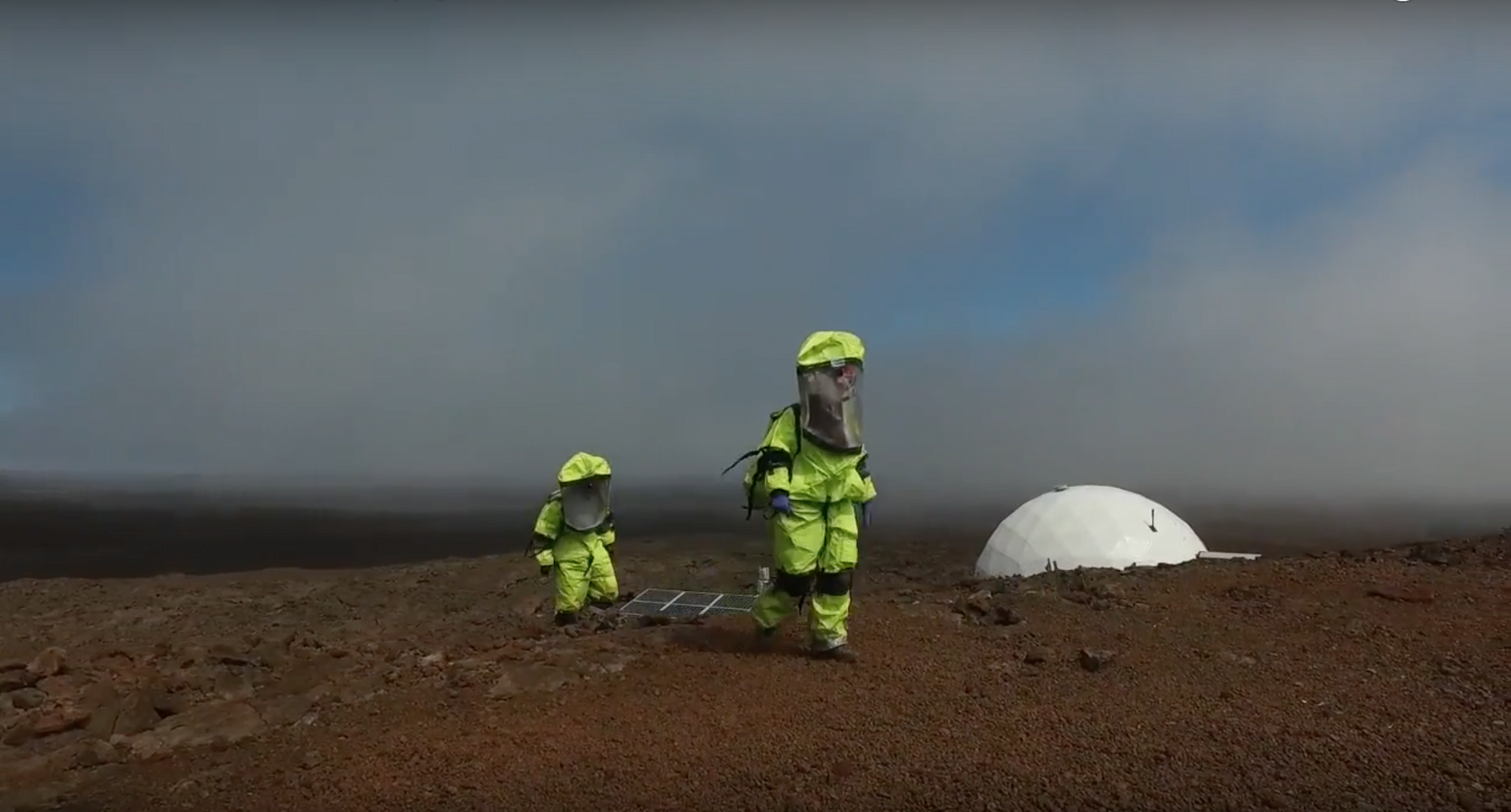Extended Isolation
Eight months ago, NASA OK'd six individuals to serve as psychology research subjects for Mission V, which took place at a facility at the University of Hawaii, Hawaii Space Exploration Analog and Simulation (HI-SEAS) at the Mauna Loa volcano. The crew stayed the course and, eight long months later, are set to emerge from their habitat today (September 17, 2017). The team has successfully completed the mission and contributed, through their months of unique living circumstances, to our understanding of the psychological effects that long-term space missions might have on astronauts.
The island, Big Island, on which the simulation is taking place is relatively remote and secluded. But to truly create the experience of isolation — which could be comparable to an astronauts' aboard a long journey or on a Martian base — the simulation was complete with a 20-minute communication delay with the outside world; approximately the amount of delay between Mars and Earth. At the center of the experiment was a 1,200 square-foot (111-square meter) dome in which the subjects lived.
Two women and four men were aboard the mission, all of whom wore mood-gauging sensors to assist with the monitoring of their well-being. The crew has been eager to leave, however, as Brian Ramos — the Health and Performance Officer aboard HI-SEAS V — stated in the video below, "The most challenging part of the mission right now has been the end of the mission."
From This Distant VantagePoint
This grueling mission has served a critical purpose in the progressive journey to Mars — a mission NASA aims to achieve with humans as soon as the 2030s. The expedition would be expected to take a minimum of 2-3 years. Within that extended period of time, a small crew would be in close quarters all day every day, with limited communication to those back home on Earth. Understanding how such extreme circumstances might affect the mental health of an astronaut is necessary to help the space agency choose a crew specifically capable of handling such a task.
Astronauts will not only have to be academically accomplished, in extremely good physical shape, and expert problem solvers — they will additionally have to be mentally suited for the challenge of long-term isolation to, and on, an alien planet.
According to phys.org, the team's "first order of business after subsisting on mostly freeze-dried and canned food: Feast on fresh-picked pineapple, papaya, mango, locally grown vegetables and a fluffy, homemade egg strata cooked by their project's lead scientist."
With that in mind, perhaps NASA may learn (after analyzing eight months of data) that the essential element for keeping tensions at bay and the ill-effects of isolation quelled is simple: better food. But whatever is found as a result of this long experiment, it is certain that such studies are not only important but essential in ensuring the safety and mental well-being of future astronauts (and future research subjects).
Share This Article
